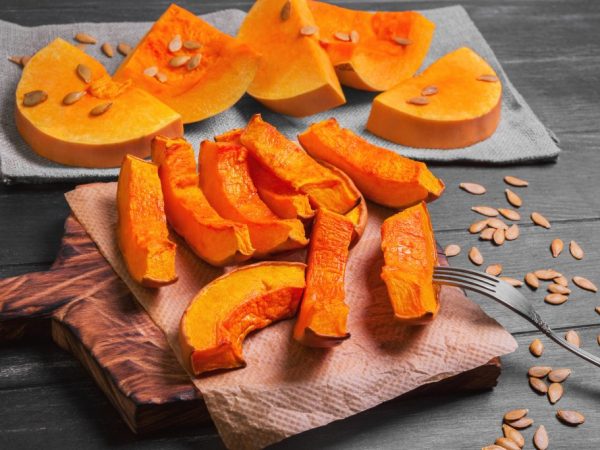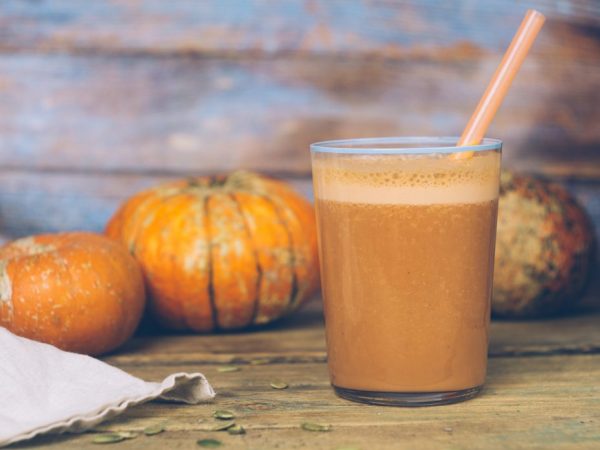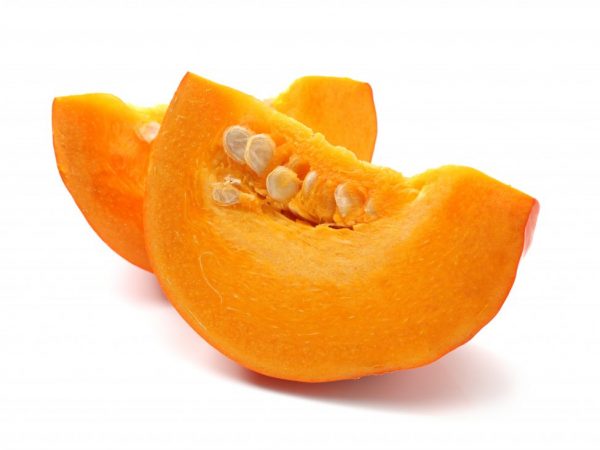How healthy is it to eat raw pumpkin
Many people know about the valuable properties of melons and gourds and remember healthy pumpkin porridge from childhood. Today nutritionists say: you can eat raw pumpkin, because it wins not only in taste, but also in beneficial properties. However, one should not forget about the sense of proportion and existing contraindications.

How healthy is it to eat raw pumpkin
Beneficial features
It is not for nothing that the pumpkin is called a storehouse of vitamins and valuable substances. During heat treatment, minerals are well preserved, but many vitamins, unfortunately, are destroyed.
Therefore, it is much better to consume fresh pumpkin. Its calorie content is quite low: from 22 to 45 kcal per 100 g, making it great for a dietary diet and contributes to healthy weight loss.
The high percentage of plant fiber in the composition helps to cleanse the intestines and normalize digestion.
In addition, fiber creates a feeling of fullness, which is important for daily vitality and a beautiful figure.
The amino acids contained in pumpkin are responsible for the construction of muscle and cartilage tissue, the functioning of the nervous system, and cell regeneration.
Zinc, phosphorus, iron, magnesium, selenium, calcium, included in the composition, are necessary for normal life.
Vitamins A, C, E, B, K, T, P are perfectly preserved and serve to maintain immunity.
For beauty
This product is useful not only for health and a beautiful figure.
It is recommended for strengthening hair and improving skin. The substances contained in the pumpkin help cleanse and renew skin cells, activate the blood supply to all organs, including the face and hair follicles.
For a lasting effect, the product is recommended to be eaten and used externally.
Application
Fresh pumpkin is used to prepare various dishes and drinks. At the same time, they use not only the pulp, but also raw seeds and freshly squeezed juice. In addition, it is useful to add pumpkin seed oil to the diet.
Pulp
Delicious vitamin salads are made from fresh pulp. A very successful combination - pumpkin pulp, apples and carrots. Pumpkin, grated on a carrot grater, is added to already cooked cereals or diluted with a spoonful of honey and eaten as a dessert.
You can make vitamin smoothies from the pulp using a blender, combining pumpkin with different fruits and berries. A fresh vegetable is tasty on its own - you can eat it individually without mixing it with anything.
Juice

Pumpkin juice will save you from insomnia
Freshly squeezed juice is diluted with water, apple or carrot juice. You can add a teaspoon of honey or a slice of lemon to the juice.
In the morning it is recommended to drink it for vivacity, and in the evening - for insomnia.
In case of urolithiasis, the consumption of the drink is agreed with the doctor and drunk three times a day (100 ml each). Even freshly squeezed juice helps relieve constipation.
Sunflower seeds
Raw seeds can be eaten just like that or added to salads and muesli.
To preserve their anthelmintic properties, you need to eat with a thin film separating the kernel from the peel.
Also, the seeds can be ground into flour and used for sprinkling dishes or making a cocktail (pumpkin flour in combination with a fermented milk drink).
The cocktail is recommended to drink 2 times a day to prevent diseases and increase brain activity, during periods of intense sports training and during winter vitamin deficiency.
Butter
Pumpkin seed oil is obtained from a raw vegetable and is most often added to salads instead of sunflower oil.
You can make the oil yourself, but the cooking process is laborious, so many people prefer to buy ready-made.
The product helps to improve vision, relieve anxiety, improve the cardiovascular system, and create prevention of cancer.
The oil is advised to take with prostate adenoma, during menopause, with hair loss and problem skin. A day is recommended no more than 2 tsp.
Contraindications
First of all, contraindications apply to people with individual intolerance to the product. Caution should be observed with low acidity and diseases of the gastrointestinal tract, especially with colic in the intestines.
After you eat the seeds, it is better to rinse your mouth in order not to harm your tooth enamel.

Do not abuse the product in case of gastrointestinal diseases
Harm can be caused by abuse of the product, therefore it is extremely important to comply with the recommended standards:
- raw pumpkin pulp - no more than 500 g per day;
- undiluted pumpkin juice - no more than 300 ml;
- oil - no more than 2 tsp;
- seeds - no more than 300 g.
When using a raw vegetable for the treatment of any disease, it is necessary to agree on the consumption rate with your doctor. An excessive amount of the product can lead to digestive disorders (constipation, flatulence, diarrhea). In addition, unripe raw pumpkin should not be eaten.
Useful Tips
- Do not store peeled and cut pumpkin for a long time - vitamins in it are destroyed over time. It is best to store the vegetable in the basement unpeeled or freeze it in chunks in the freezer.
- In consultation with the doctor, the product can be consumed during pregnancy. Its vitamins and valuable substances will not only be useful for the future baby, but will also help reduce toxicosis in the mother. A properly selected diet with the participation of raw pumpkin will remove swelling and increase immunity.
- This product is recommended for vegetarians and those who follow a strict fast. The presence of proteins in the vegetable itself and its seeds will compensate for dietary restrictions.
- A raw vegetable makes it easier to digest heavy foods like meat. It is recommended to be combined with heavy meals during meals or to eat a couple of bites after the main meal for better digestion.
Conclusion
Raw pumpkin is a healthy vitamin product with a pleasant taste and fresh smell. By eating a vegetable without heat treatment, we get a maximum of valuable substances and vitamins.
A useful addition to the diet will be not only the pulp of the vegetable, but also juice, seeds, oil. With the exception of some contraindications, fresh pumpkin can be eaten daily, observing the established norms.

